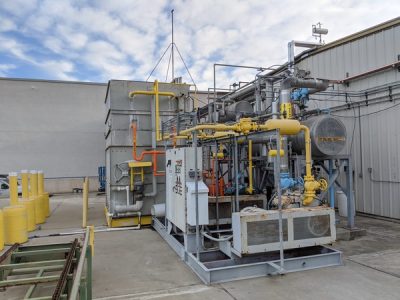RAGAGEP: Historical Variants and the Importance of IIAR Standards | Part 2: Defining RAGAGEP and Historical Perspectives

Uriah Donaldson, OHST, presented a technical paper at the 2019 RETA National Conference and 2021 IIAR National Conference titled RAGAGEP: Historical Variants and the Importance of IIAR Standards.
This is the second post in a series of blogs which include excerpts from his technical paper.
Defining RAGAGEP and Historical Perspectives
The notable origin of the acronym RAGAGEP can be traced to the Process Safety Management (PSM) regulation, published and enforced by the Occupational Safety and Health Administration (OSHA). Several of the PSM program elements require facilities to document that their refrigeration systems have been designed in accordance with recognized and generally accepted good engineering practices.
Understanding that RAGAGEP is a regulatory requirement is important. As far as the law is concerned, there are engineering standards which are accepted, normal, and good, and by law these standards are legally enforceable. A facility is not allowed to build a new system, or part thereof, if the design is not in accordance with these accepted standards. But the question reasonably presents itself, “What qualifies as RAGAGEP?”
In the Ammonia industry, like any other industry, there are organizations that work to write documents which seek to standardize best practices and minimum criteria for design; installation; startup; and inspection, testing, and maintenance for ammonia refrigeration systems. These organizations fall into two general categories: code writing organizations and standard writing organizations.
Code Writing Organizations
In the United States, codes are documents that are adopted by local jurisdictions, generally at the state level, and are therefore enforceable by compliance officers and local regulators. Organizations such as the International Code Council (ICC), which publishes the International Mechanical Code, and the International Association of Plumbing and Mechanical Officials (IAPMO), which publishes the Uniform Mechanical Code, are code writing organizations.
Standard Writing Organizations
Organizations that write documents regarding specific subjects and/or for specific industries, but which do not inherently hold the same authority as code documents, are called Standard Writing Organizations or Standard Developing Organizations. In general, documents published by these organizations are not formally adopted by local jurisdictions but become enforceable by being referenced in code documents. The two most prominent standard writing organizations in the Ammonia industry are the International Institute of Ammonia Refrigeration (IIAR), which has published numerous standards and bulletins over the years, and the American Society of Heating, Refrigerating and Air-Conditioning Engineers (ASHRAE), which is most widely known for its Safety Standard for Refrigeration Systems, ASHRAE 15.
In answering the question “What qualifies as RAGAGEP?” it is also important to mention the American National Standards Institute (ANSI). While ANSI is not a code or standard writing organization, it sets the parameters and procedures for developing consensus documents. For a document to be ANSI approved it must meet certain criteria, such as public review periods, to ensure the document does not show bias towards a particular group within that industry, but rather represents genuine consensus among the industry.
The two organizations listed above (IIAR and ASHRAE) have published their primary standards (IIAR 2 and ASHRAE 15) with ANSI accreditation for the last several decades. This does not mean however that all documents published by a standard writing organization will be ANSI accredited. Many standard writing organizations write documents which are not subjected to ANSI’s procedures for consensus and are therefore classified as non-consensus documents.
OSHA’s Standard Interpretation
In a standard interpretation titled, “RAGAGEP in Process Safety Management Enforcement” OSHA lists four examples of RAGAGEP: (1) Widely adopted codes (2) Consensus documents (3) Non-consensus documents (4) Internal Standards. While the first three categories have been discussed above, the fourth “Internal Standards,” is a type of RAGAGEP that is officially accepted but generally not recommended by experts in the ammonia industry. The reasoning is that Internal Standards are intended for unique processes for which RAGAGEP in the first three categories does not already exist, or for larger corporate businesses that want to hold their facilities to a higher standard than is already published.
In addition to these “examples of RAGAGEP” the standard interpretation states, “in keeping with the performance-oriented nature of the PSM standard, employers select the RAGAGEP they apply in their covered processes” and that “the examples of RAGAGEP… are not intended to reflect a hierarchy of RAGAGEP.”
The previous blogs are available in the following links:
- Part 1: Introduction

Leave a Reply